Hello Everyone (especially parents!)
As we wrap up term two, I want to provide a recap of our activities! Enjoy!
We had two great units, one focusing on technology, and the other investigating migration! One of the new things about our revised curriculum is how we approach our learning. Students focus more on big ideas, which means investigating not only content, but also thinking about curriculum from a conceptual point of view. As I have explained in the past, this is why we do larger units with a broad inquiry statement we can investigate!
Another new part of our curriculum is the way we refer to skills in each subject area, our curricular competencies. Students had opportunities to use research, thinking, metacognitive, observation, writing, and other skills as they explored the content of the curriculum.
Finally, we also are focusing on core competencies, which means looking closely at the skills related to lifelong learning and all aspects of our lives — for both kids and adults! So far, we have talked about communication, creative thinking, and positive personal and cultural identity. Next unit, we will focus on critical thinking.
Our first unit focus statement was: People use their understanding of natural laws to create technologies that have an impact on our world. We looked at simple machines, the relationship between technology use and health, and how technology has impacted our world. The larger concept of our unit was CHANGE — how has our world changed as a result of new technology? We had class debates, we built Rube Goldberg Machines, we learned math related to work and machines, we played with catapults, and we shared research in slideshows to prove which machine had the greatest impact on humanity.
Our second unit focus statement was: Human migration is a response to challenges, risks, survival, and a natural need to explore. We tried to answer a big question, related to the concept of EXPLORATION — How did we get here? Not how we came to be in MACC, but how did we come to be in Canada, right here, right now?? We made a timeline of Canadian history, we looked at early exploration and challenges, discussed how humans came to North America, and looked at early First Nations who were here before us. Students chose a historical figure, did further research, and created a dramatic monologue on the person, complete with costume and props! We talked about migration of people, the restless gene scientists discovered that makes us want to move, and immigration into Canada. We compared the human need to move with that of animals and learned our triggers and cues to migrate are very similar. Students created Puppet Pal presentations on a migrating animal of choice. We also created a giant map in our room charting the paths of animals and our migrating families!
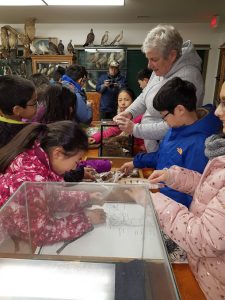
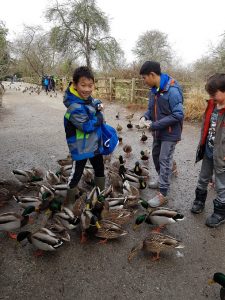
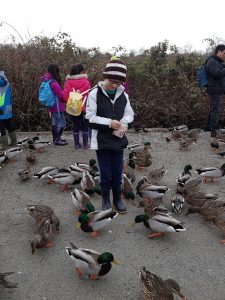
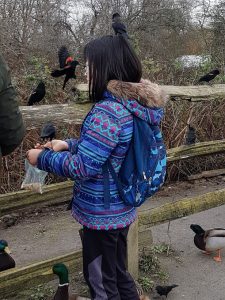
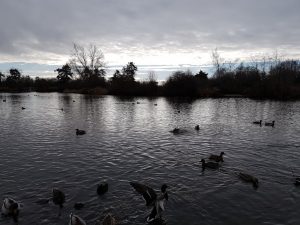
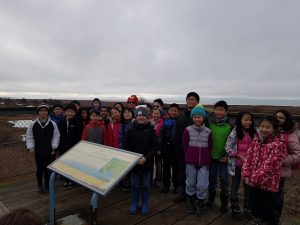
While investigating animal migration, we visited the Reifel Bird Sanctuary in Delta! We learned about estuaries, why we need protected areas for animals, and migratory bird facts. We also fed many red-wing blackbirds and chickadees who ate right out of our hands!
We worked together doing many critical and creative challenges, including math games to explore deeper concepts behind multiplication, and the “Not a Box” activity which asked teams to create something new out of a plain, cardboard box!
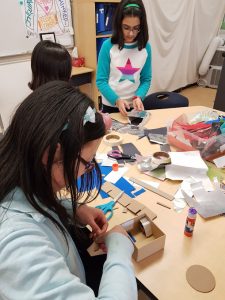
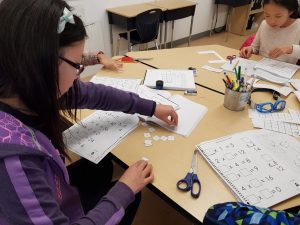
Using our creative thinking, applied design skills, and math knowledge of area and perimeter, students created tiny house models! We are looking forward to your seeing the entire village of houses when you come to student led conferences on April 11th! Below see two of the tiny houses converted into a taco food truck and a sushi bar!
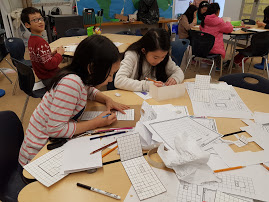
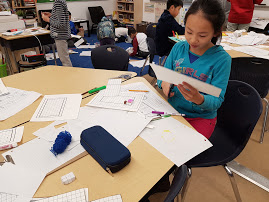
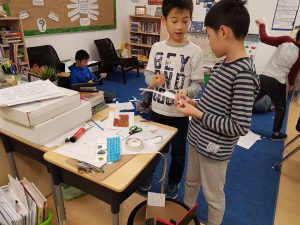
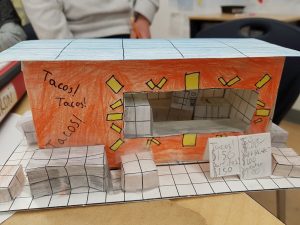
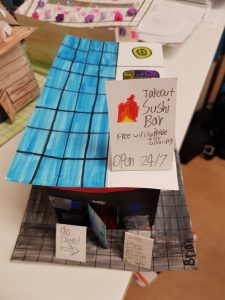
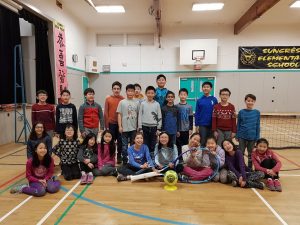
As part of our physical education classes, we went on outdoor hikes, played aerobic games, talking about technology and our health, and played tennis with a visiting coach!congrats
We looked at the Canadian Quilt of Belonging that has a quilt square representing each culture present in Canada, and then we made our own class quilt, with paper squares representing each of our cultures. Students are adding a picture of their quilt square to their e-portfolios and explaining the symbols and layout they used to represent their culture. Through this activity, we looked closely at the core competency of positive personal and cultural identity.
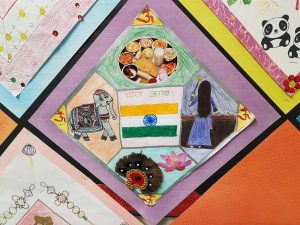
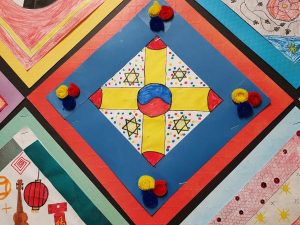
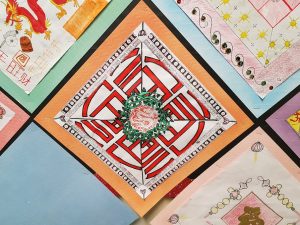
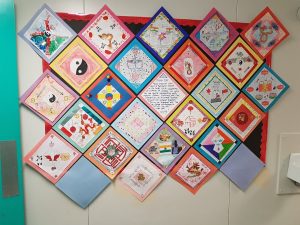
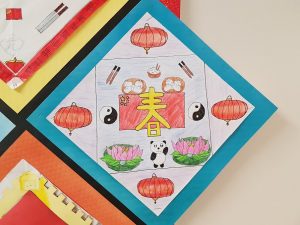
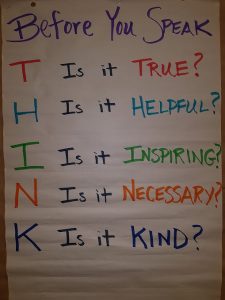
During our class meetings, we planned our Valentine’s Party, talked about our interests, and worked on our social and communication skills. We practiced THINK, which means “Think before you speak” and pause to consider whether what you are saying is true, helpful, inspiring, necessary, and kind. This is something we are all continuing to work on to improve our relationships with one another in term three.
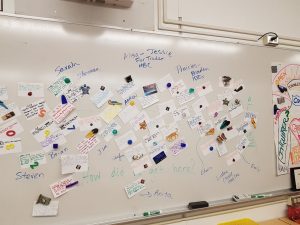
To start our migration unit, we put the question “HOW DID WE GET HERE?” on the board. We went through piles and piles of book resources and websites on early Canadian history to make a timeline of the events we thought were important to the story of how we all ended up here. We included things like First Nations coming to North America via Beringia, European explorations, the fur trade, and large migrations of people to Canada for a variety of push and pull factors, whether war, the building of the CPR, the gold rush, or for land, among other reasons. Everyone put cards on the board for our giant class timeline, seen in the picture! Then, each student chose a historical character from the timeline to research further. They had to pretend the person was still alive, write a monologue in the first person, make costumes and props that would represent the person, and then present it in front of the class. Here are some pictures of our historical figures.
In order from left to right: a Russian immigrant, an Italian CPR worker, a Syrian refugee, a German farmer coming to the prairies, Capt. James Cook, Henry Hudson, the Viking Leif Erikkson, and John Cabot. There were many more great photos! Students are video taping their performances to show you at Student Led Conferences on April 11th!
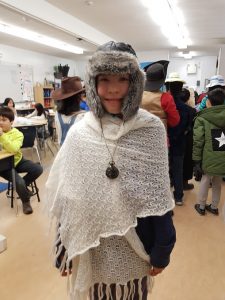
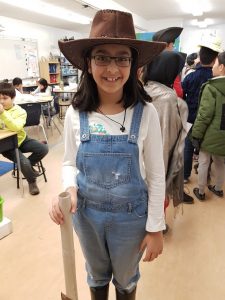
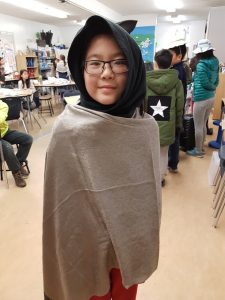
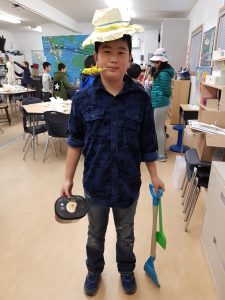
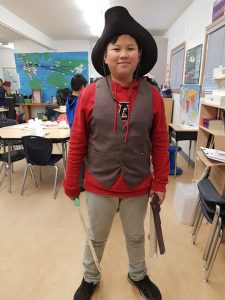
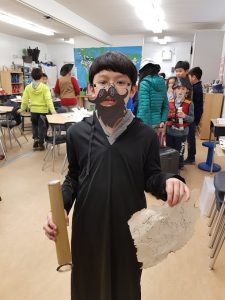
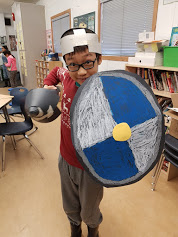
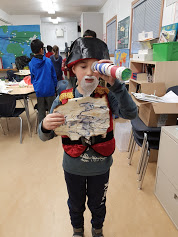
There are so many more photos and projects to show! Please join us on April 11th for our Student Led Conference.
We will have a longer slideshow of photos, activities you can do with your children (like making a catapult or doing cookie mining!), and lots of great work to show like Puppet Pal presentations on migratory animals, our class migration map, and character speeches! A letter to sign up for a time will go out as soon as we get back from vacation.
Students have also begun using their E-Portfolios, beginning with documentation of art and our tiny house project. We will use this tool more during term three. It is not a personal blog and is meant to only be worked on at school as a documentation and reflection tool.
Have a great Spring Break! More to come after break about our field trip to Britannia Mines and activities from our new unit on how humans make systems to get their needs and wants met.
Ms. D





























